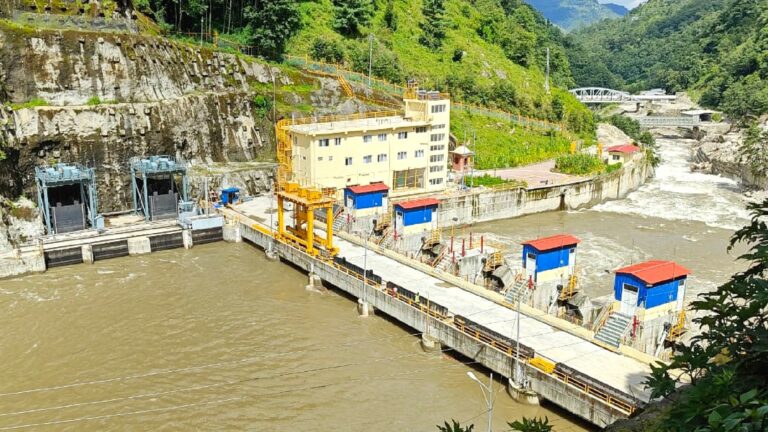Kathmandu: 82-megawatt Lower Solu Hydropower Project, located in Solukhumbu district, has been successfully connected to Nepal’s national transmission network.
Constructed along the Solu River, the project’s electricity is now being fed into the national grid through a 132 kV double-circuit transmission line via the Tingla substation.
Developed with private investment, this hydropower plant marks a significant milestone in Nepal’s energy production and distribution sector.
According to Assistant Manager Krishna Bahadur Chaudhary of Solu Hydropower Limited, the project began trial production from its first unit on 20 July and has since undergone successful grid synchronization tests.
The project features a dam constructed in Salme, bordering Solu Dudhkunda Municipality wards 7 and 11. Water is channeled through a nearly six-kilometer underground tunnel to the powerhouse in Bhadoure, Tingla, where electricity is generated. The infrastructure includes a five-kilometer-long tunnel system designed to regulate water flow and optimize energy production.
Two Pelton turbines, each with a capacity of 41 MW, have been installed, both of which have completed successful testing.
Nepal Electricity Authority (NEA) will conduct further production tests over the next 15 days before granting final approval for commercial operation.
Initiated in 2016, the project faced numerous challenges, including difficult terrain, technical complexities, and adverse weather conditions. A major landslide during the final construction phase severely damaged critical structures, including the penstock, necessitating complete reconstruction. While this increased costs, officials expect long-term durability benefits.
With an investment of Rs 16 billion from European banks, including FMO, the project stands as a model of private sector and international collaboration. Despite initial setbacks, construction was completed two months ahead of the September 2025 target.
The Lower Solu project is expected to generate a minimum of 23 MW during winter and up to 82 MW in the monsoon season. It is part of the government’s “Super Six” initiative, which includes six major privately funded hydropower projects. Currently, it is the second-largest privately developed hydropower project in Nepal, following the 86 MW Solu Dudhkoshi plant.
Beyond electricity generation, the project has significantly contributed to local employment and infrastructure development in Solukhumbu. Dozens of local youths were engaged in various technical and non-technical roles, from tunnel construction to turbine installation.
Local representatives believe the project will serve as a foundation for Solukhumbu’s economic growth, boosting tourism, industry, and service sectors. With reliable energy now feeding into the national grid, the region anticipates accelerated development and improved living standards.
The successful commissioning of the Lower Solu Hydropower Project underscores Nepal’s growing energy independence and the potential of private sector investment in large-scale infrastructure development.



Comment Here